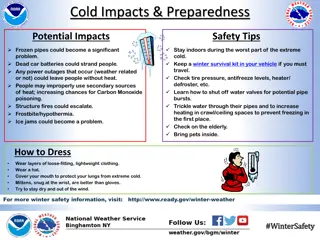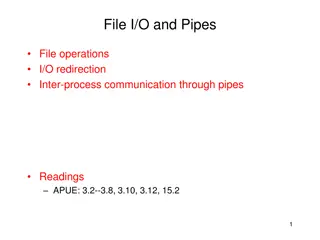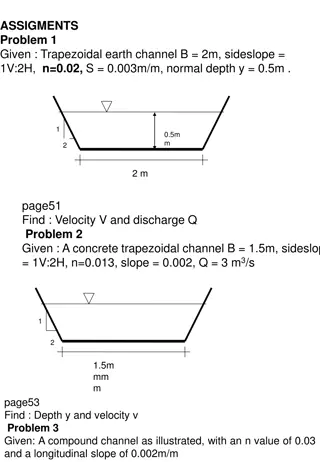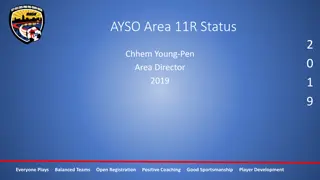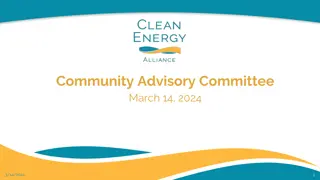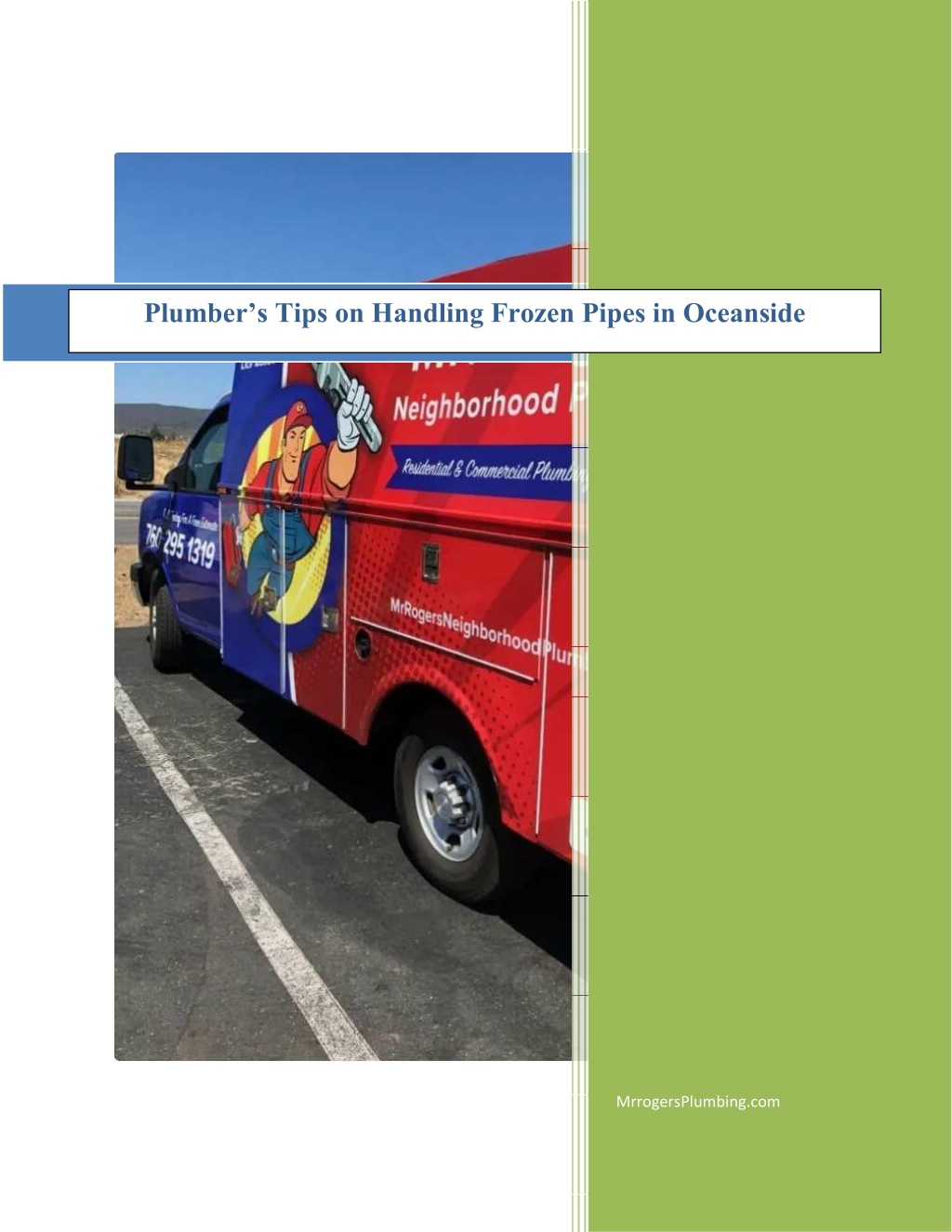
Plumber’s Tips on Handling Frozen Pipes in Oceanside
Learn to detect and thaw frozen pipes early. Identify signs like no water flow, frost, and unusual sounds. Check vulnerable areas, use tools like infrared thermometers, and follow safe thawing methods. Know when to call a professional plumber to prev
Download Presentation

Please find below an Image/Link to download the presentation.
The content on the website is provided AS IS for your information and personal use only. It may not be sold, licensed, or shared on other websites without obtaining consent from the author. Download presentation by click this link. If you encounter any issues during the download, it is possible that the publisher has removed the file from their server.
E N D
Presentation Transcript
Plumbers Tips on Handling Frozen Pipes in Oceanside MrrogersPlumbing.com
Table of Contents Early Detection of Frozen Pipes ............................................................................................................. 2 Thawing Frozen Pipes............................................................................................................................. 3 When to Call a Professional Plumber...................................................................................................... 4 Contact Today - Mr. Rogers Neighborhood Plumbing............................................................................. 6 Early Detection of Frozen Pipes Identifying Signs of Frozen Pipes Here are some essential tips for recognizing the early signs that your pipes may be frozen: No Water Flow: If you turn on your faucet and only a trickle comes out or nothing at all, this is a primary indicator of a frozen pipe. This is especially true during cold snaps. Frost on Pipes: Visible frost accumulating on the surface of your pipes is a clear sign of freezing. This is most apparent on pipes that are easily accessible, such as those under sinks or in basements. Unusual Sounds: If you hear clanking or whistling when you try to use water, this could be air trapped behind an ice blockage, signaling a frozen section. Specific Locations to Check in Your Home: Exterior Walls and Unheated Spaces: Pipes running through these areas are most susceptible to freezing. Check garages, basements, and crawl spaces. Under Sinks: Especially those on the house's perimeter, these pipes are vulnerable to the cold, especially if cabinets are kept closed. Near Windows or Vents: Pipes near openings that may let in cold air should be monitored closely during colder weather.
Tools for Detection Here are some tools and gadgets that can help: Infrared Thermometer: This tool allows you to check the temperatures of your pipes without direct contact. Point it at different sections of your pipes to find unusually cold spots. Heat Tape with Thermostat Control: While primarily used as a preventive measure, heat tape can also indicate where on a pipe the temperature is dropping dangerously low, as it will automatically turn on in these areas. Pipe Insulation Foam: Though not a direct detection tool, feeling along the insulation can help you locate hard, icy sections, suggesting internal freezing. Thawing Frozen Pipes When dealing with frozen pipes in Oceanside, it's critical to thaw them carefully to prevent damage to your plumbing system and ensure safety. Here are effective techniques and important precautions for safely thawing frozen pipes. Safe Thawing Techniques Step-by-step Guide on Safely Thawing Frozen Pipes: 1.Open the Faucet: Before you begin the thawing process, open the faucet that the pipe supplies. This allows melted water to flow through and helps relieve any built-up pressure in the pipe. 2.Apply Heat Gradually: Start from the faucet end and work your way towards the coldest section of the pipe. This gradual approach helps to effectively melt the ice without causing sudden pressure changes that can crack the pipe. 3.Use the Right Tools: Suitable tools for thawing include a hair dryer, heat lamp, or portable heater. Position the device so that the heat evenly distributes along the pipe. Never concentrate heat in one spot as this can weaken the pipe. 4.Heat Tape: If you have heat tape installed, make sure it is functioning properly. This tool can provide gentle, consistent heat to the pipe and is ideal for hard-to-reach areas.
5.Warm Towels: Soak towels in hot water and wrap them around the frozen section of the pipe. This can help thaw the freeze without introducing too much heat at once. Precautions to Avoid Damaging the Pipes or Causing Injury: Avoid Overheating: Do not use excessively high heat as it can warp or melt the pipes, especially if they are made of a sensitive material like PVC. Check for Leaks: As you thaw the pipe, watch for leaks. Frozen pipes can crack, and as they thaw, these cracks can become evident. If you discover a leak, shut off the main water supply immediately to prevent water damage. Use Electrical Devices Carefully: Ensure that any electrical device used is kept away from water to avoid electrocution. What Not to Do While it's crucial to address frozen pipes quickly, certain methods can be hazardous or counterproductive. Common Mistakes Homeowners Make When Trying to Thaw Pipes: Applying Direct Flame: Never use an open flame, such as a propane torch, to thaw pipes. This can not only damage the pipes but also pose a serious fire hazard. Using Boiling Water: Pouring boiling water directly on the pipes is risky and can cause sudden temperature changes that may weaken or burst the pipe. Ignoring Leaks: Failing to check for leaks during the thawing process can lead to significant water damage inside your home. When to Call a Professional Plumber Dealing with frozen pipes can sometimes be managed with DIY methods, but there are situations where calling a professional plumber in Oceanside is not only recommended but necessary. Understanding when to call a professional can save you from potential hazards and costly damages. Scenarios Where It s Best to Call in a Professional Plumber in Oceanside:
1.Multiple Frozen Pipes: If you discover that multiple pipes are frozen, this may indicate a more systemic issue that requires professional intervention. 2.No Signs of Thawing: If your efforts to thaw the pipes have been unsuccessful for several hours, it s time to call in a plumber to prevent any risk of the pipes bursting. 3.Pipes in Walls or Hard-to-Reach Places: Frozen pipes located in walls or other inaccessible areas should be handled by professionals who have the tools and experience to deal with them without causing damage to your home. 4.Signs of Pipe Damage: Any signs of cracks, leaks, or bulges in your pipes are clear indicators that professional repair is needed immediately. Signs that Thawing Efforts May Not Be Enough or Could Potentially Cause Damage: Strange Noises: If you hear unusual sounds like banging or cracking coming from your pipes during the thawing process, this could indicate that the ice is causing the pipes to expand dangerously. Water Damage: Any signs of water damage such as stains, drips, or puddles around the pipes suggest a leak that likely requires professional repair. Lack of Water Pressure: If water pressure doesn t return to normal after the pipes have been thawed, there may be an underlying issue that requires professional diagnostics and repair.
Contact Today - Mr. Rogers Neighborhood Plumbing Address 4061 Oceanside Blvd Suite E, Oceanside, CA 92057, United States Phone Number 760-938-6867 Business Hours 7 Days - 7 AM 8 PM Website https://mrrogersplumbing.com/








